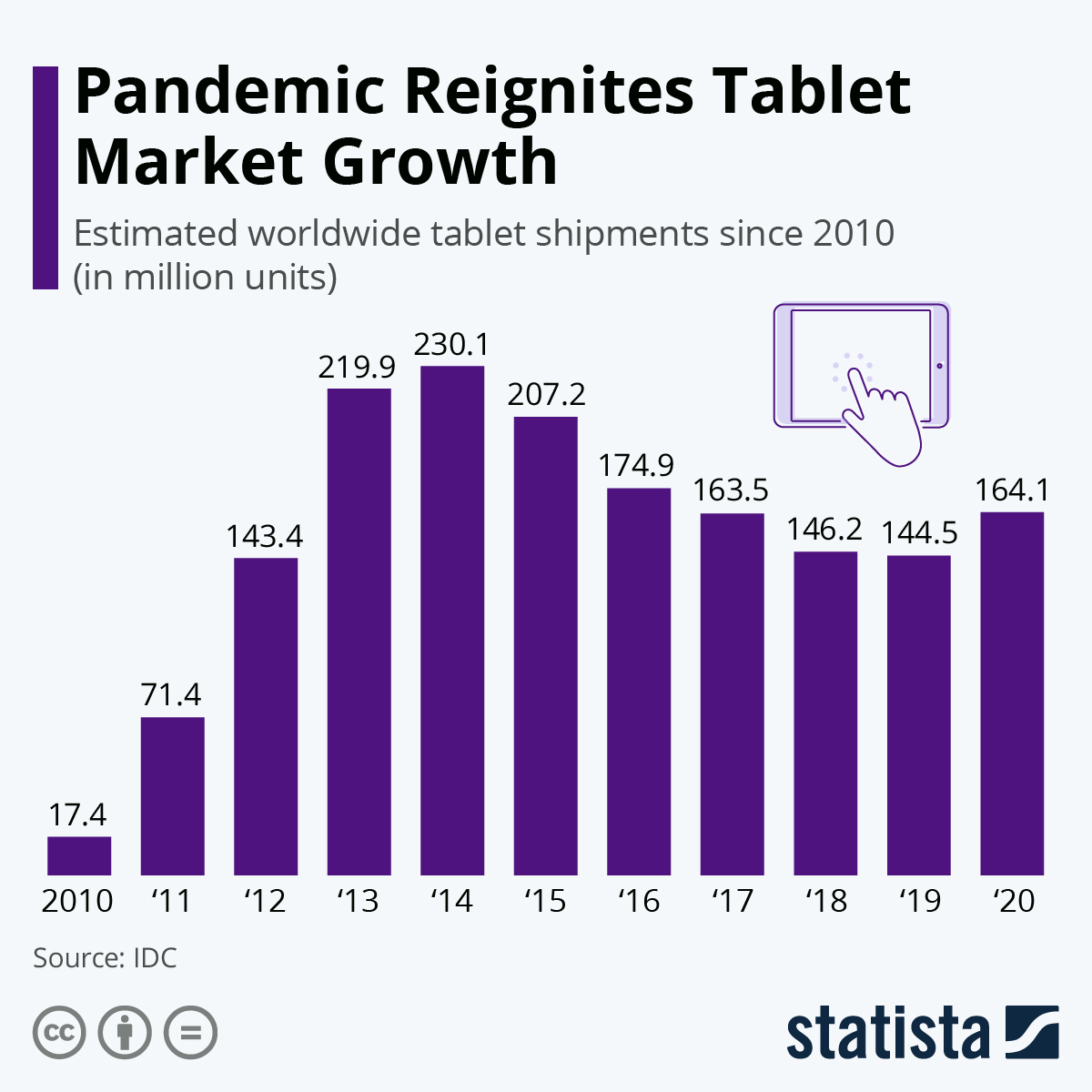Source: Statista
After weeks of speculation, Apple finally announced its first product event for 2021. The virtual event, taglined “Spring Loaded” will be held on April 20 and is widely expected to feature new iPad Pro models and other rumored product announcements. While the iPad Pro was given a minor speed bump last spring, the substantially cheaper iPad Air released in October 2020 comes awfully close to matching its Pro sibling, making a significant upgrade to the Pro line likely and necessary to justify the price difference. Aside from product line considerations, it does make sense to release new tablets right now, as the COVID-19 pandemic has reignited growth in the previously stagnant market.
Following the original iPad’s release in 2010, tablet sales had taken off, peaking at 230 million units in 2014. After that, the market cooled off significantly though. First came the realization that people would use their (unsubsidized) tablets longer than they would use their phones. Then smartphones grew larger and larger, putting the need to buy an additional device into question for many consumers. Global tablet shipments gradually dropped from 230 million in 2014 to 145 million in 2019, before climbing back to 164 million last year.
According to IDC, global tablet demand soared to the highest level since 2017 in Q4 2020, as people adapted to working, learning and teaching from home in the face of the pandemic. “Unprecedented demand in the consumer and education segments due to work from home and online learning has undoubtedly led to the resurgence in tablet demand,” Anuroopa Nataraj, research analyst at IDC said, before warning that the resurgence may be short-lived as tablets still face intense competition from notebooks and smartphones.


